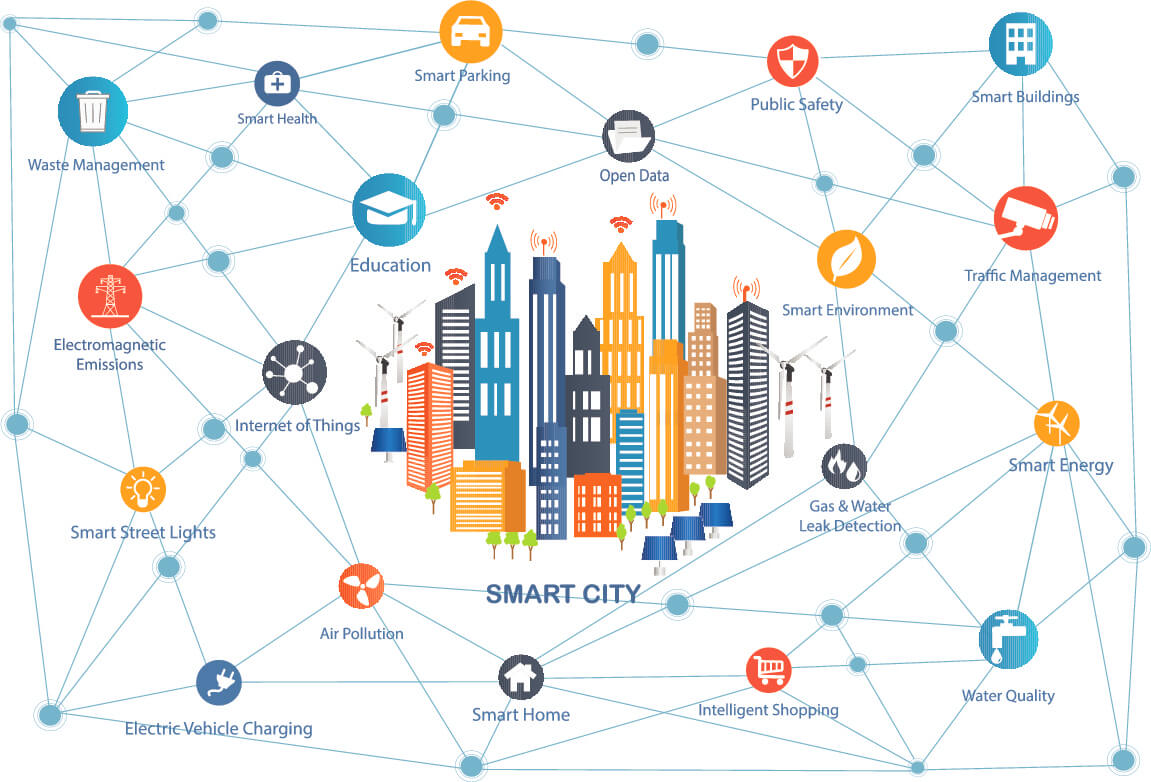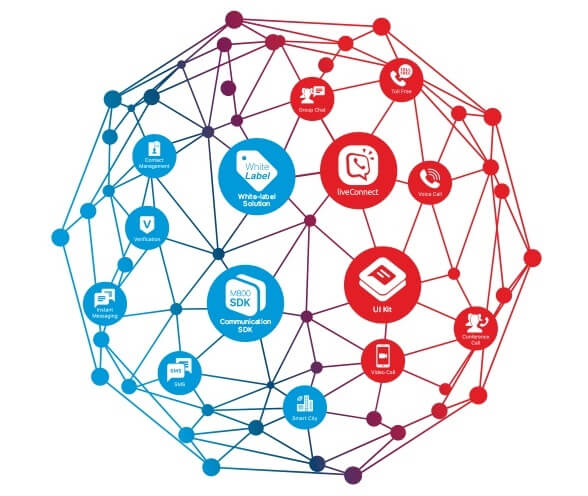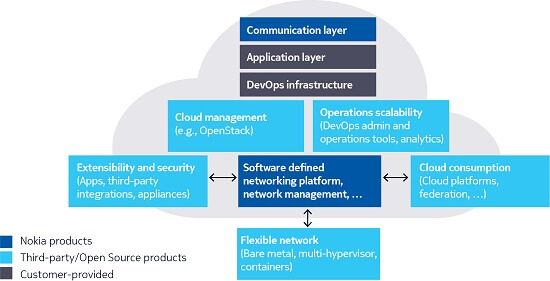
The future of communication – unified and as-a-service
MANY of the ideas which underpin today’s highest-tech communications methods and preferences are much older than we are led to believe.
Voice over IP (VOIP), for instance, is just the next logical step from the early days of the POTS (plain old telephone service) system – which in turn, was a step forward from the (indeed very) analog telegraph service that carried morse code. By turning the media comprising the message into a series of digital packets, digital voice communications – to continue to use the example – becomes just as able to be treated, routed or processed as any other form of data.
Our preferences for particular communications methods aren’t dictated purely by new technologies – in fact, history tells us that new ways of communicating are often viewed with some suspicion. It takes a while between a technology’s discovery and its broader acceptance.
In order to accommodate each new comms channel, and to include all demographics’ particular tastes (younger generations may favor mobile messaging platforms, older hands opt for voice), unified communications (UC) providers have been quick to bring products to the market which exploit the “democracy”, or platform-agnosticism, of the digital packet.
Today’s UC companies allow organizations of all sizes to manage incoming and outgoing messages of many types, ranging from social media DMs, text messages, online chatbots, voice and voicemail data, and even employ automated speech recognition.

Naturally, with data packet democratization/agnosticism, mobile-working for staff becomes a relatively simple manner (at least at the level of the app). Conversely, customers and partners can reach out wherever they might be, on whichever medium is most suited to purpose. From highly encrypted VPN tunneling to plain text SMS, once digitized, communications data flows freely.
For this technology to function, it has to work on two entirely different, yet inter-reliant levels. The first, the application layer will be familiar to everyone: the click-to-call feature on a website, the messaging app on a tablet or the video conferencing software that’s bundled with our phones.
But under the application layer is the network layer – the conduit through which data flows. Technical staff may call this “infrastructure” or may even break the application/network concept down further into separate OSI (open systems interconnection) layers. Regarding connectivity, deploying technology which required a network layer brought its own demands for the business in the past. These might have included:
– Purchase or lease of PABX hardware for voice communications, along with server racks, UPS protection, wiring looms, internal CAT 5e/6 provision, VOIP headsets, etc.
– Approaching phone and mobile carriers to integrate their networks into existing communications portfolios.
– Acquiring access to international points-of-presence for high capacity internet connectivity.
The dependency on the network of the most complex applications which enable businesses to communicate cross-platform has led to a new breed of communications providers. Often facilitated by cloud techniques and methods, these new players offer full unified communications as a service (UCaaS) platforms.
But of course, once a service like UCaaS is available, it can easily apply in different areas from traditional communications providers’ markets.
New technologies such as IoT, big data processing, and smart cities (powered by intelligent devices and machine learning) are all based on network layers: each new technology lives or dies by its ability to communicate, and so it’s here that a communication platform as a service (CPaaS) becomes the next evolutionary step.
Creators of new IoT devices need to ensure that the data networks their offerings use are secure, reliable, non-proprietory, global and responsive. Without neutral and efficient data layers, IoT technology loses value.
For instance, the significant investment required by developers in the smart city space needs high-speed network access for plans to succeed; plans designed to empower citizens and make authorities more responsive to inhabitants’ movements, behaviors, and requirements.

Developers of cutting-edge technology (like IoT, AI, machine learning, big data, virtual reality, etc.) should not need to have to build their own infrastructure in order to deploy. Today, of course, infrastructure-building may not be the physical creation redolent of the past, such as PABX units being physically installed into racks.
Rather, infrastructure may be digital, globally-distributed and mobile. With this changing business environment in mind, we are seeing the next generation of communications provision companies offering a more extensive range of products, including many or all of the following:
– Unified communications platforms which allow local communications preferences to be reflected, but exist in a global, interconnected network.
– As-A-Service pricing models allowing modularity of service provision, malleable contract terms, and even per-byte billing.
– Transglobal networks providing the same levels of uptime, security, and bandwidth, irrespective of locale.
– The facility to act as a white-label service, allowing third-party users to value-add their own services.
– Safe and efficient access to network layers for third-party solutions, via secure SDKs, meaning new software and hardware can tap into the latest comms networks without having to invest in virtual or physical infrastructure.
– A proactive approach to data security, and awareness of and ability to encompass local data governance such as GDPR or any country-specific legislation.
– Transparency into the network layer, allowing data collation by clients to track data use levels, locations of users’ interactions and other business-changing intelligence.
Here three providers of the connectivity services which today’s businesses may wish to consider with regards their communications requirements.
M800
Hong Kong-based M800 provides carrier-grade communication packages that are supported by strict service quality and guaranteed SLA. The company has high-level access to over 50 POPs (points of [internet] presence) and 260 tier 1 telecoms carriers and mobile operators right across the globe. This provision ensures that its customers get the same high levels of connectivity anywhere in the world. Many businesses are enticed by the level of excellence M800 provides, which has allowed the company to serve various vertical client bases including those in the banking and finance industries.
With no need for its clients to build or obtain any network infrastructure, high-quality comms solutions can be put into place quickly and efficiently – this is true CPaaS, complete with high level security and reliability. This mean that it is extremely stable, reliable and well-tested with at least 99.5% availability and fast fault recovery.
Businesses partnering with M800 also benefits from working under a low-CAPEX model as they do not need to invest in various forms of hardware that may eventually result in potentially redundant resources. This allows them to focus their resources where it matters – on their business and product development.

The global network infrastructure M800 has built has a high connectivity capacity allowing its products to be ready for when its partners grow in size and sustain an increase in network traffic. This is in addition to M800 license-based business model which doesn’t require businesses to invest in more physical resources when scaling up. The company also gives its users access to backend data, allowing the usage statistics of its products to be captured and examined – perfect for business intelligence gathering and repurposing for CRM and customer engagement activities.
Through a diverse and secure global network infrastructure, M800 has built a lineup of credible communication solutions utilized by businesses across the world.
M800 portfolio includes an OTT (over-the-top) white label communications application, which can be used either as an internal communication tool or even as a CRM solution, in its own right. The company also offers a robust SDK Suite for app developers and IoT companies covering connected cars, smart wearables, & security cameras and is a part of many smart city initiatives. In addition, as announced at MWC 2018 it is tightly coupled with a powerful and customizable plug-and-play facility for developers, the UIKit.
M800 UIKit allows developers to speedily deploy M800 secure communications capabilities into their apps and software, initially using templates and ready-mades, but being completely adjustable according to requirements.
Also announced at MWC 2018 was the European launch of liveConnect, a further piece of communication functionality from M800. The product is a cloud-based customer service platform which allows complete fluidity regarding comms channels, for operators and customers alike. liveConnect means that companies of any size can create virtual help desks or call centers, deploying staff via mobile or off-net. The platform also allows companies that are currently using toll-free to easily integrate their numbers into liveConnect and upgrade it into a seamless experience for their customers. This will transform the customer service industry as more end-users gain the choice to reach their agent through any medium.
To learn more about M800 solutions, read the full profile here.
SCHNEIDER ELECTRIC
Global giant Schneider Electric’s range of solutions encompasses both hard- as well as software. Their particular expertise is in interconnected products, a.k.a. The Internet of Things, is further extended by solutions which allow control of network edges, and a full host of business intelligence analytic solutions.
While the company’s industry business is valued at around EUR5.7 billion, its contribution is only approximately 20 percent of Schneider’s overall revenue; services provided to industries make up the majority.
The company bases most of its service products on the EcoStruxure framework, offering an open IoT system which delivers reliable, sustainable and efficient results.

Its IoT deployments can automate service infrastructure and industry alike, allowing users in heavy manufacturing and service process operators to automate and implement technology to improve business goals.
EcoStruxure can operate throughout the enterprise, deployable from the power grid, to the data center, and right across buildings and infrastructure to allow the implementation of smart structures and so-called intelligent city technologies.
Its product suite comprises of three main areas:
- Product collectivity: IoT products which monitor, measure and control.
- Edge control systems: automate processes like, for instance, monitoring power consumption. There is also a host of site-specific software applications deployable, which can connect to automated and IoT systems.
- Enterprise-level software applications: these include business analytics and various data services. They are typically based in the cloud, and help deliver improvements in businesses’ bottom lines.
EcoStruxure allows partners to develop their own solutions for bespoke installations. Schneider estimates around 160,000 developers are using the EcoStruxure platform right across the world.
NOKIA
Since its heyday as the world’s leading mobile phone provider, the fortunes of Finnish company Nokia have declined, despite the company’s sale to Microsoft. The American giant promptly asset stripped the company, leaving a much smaller concern which is concentrating on business service provision.

The Rapport Enterprise Communications Platform is one such string to the company’s bow, and allows customers to move one step beyond a unified communications package, with a degree of bespoke deployment which even renders shadow IT unnecessary.
Rapport gives partners and employees communication tools which they need in today’s digital landscape but also allows developers access to the underlying code so that communication facilities can be built into a new generation of apps and software offerings.
The framework can be deployed either on a private cloud or hybrid topology and can even integrate existing hardware such as PABX solutions (which may represent serious capital investment) providing a layer of software obstruction on top of hardware to allow its management with other communication methodologies.
Costs can be reduced by eliminating back-to-back transponders at interconnection points, and the company claims to reduce the size and power consumption per bit of data as a result.
READ MORE
- Ethical AI: The renewed importance of safeguarding data and customer privacy in Generative AI applications
- How Japan balances AI-driven opportunities with cybersecurity needs
- Deploying SASE: Benchmarking your approach
- Insurance everywhere all at once: the digital transformation of the APAC insurance industry
- Google parent Alphabet eyes HubSpot: A potential acquisition shaping the future of CRM
